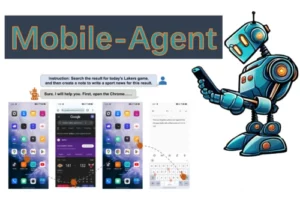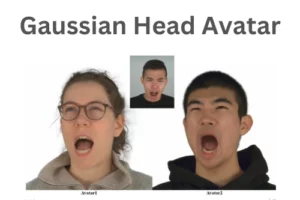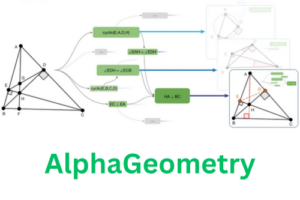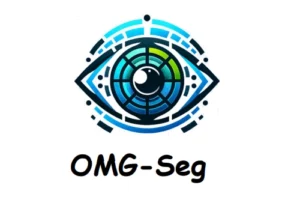Bridging the gap between artificial intelligence and medical imaging! Dive into the cutting-edge world of SAM-Med2D–A new era of precision and reliability in healthcare diagnostics. A dedicated team of researchers from the Shanghai AI Laboratory at Sichuan University has made significant strides in the analysis of medical pictures.
SAM-Med2D is adapted from Segment Anything Model (SAM) designed specifically for medical image segmentation, addressing the domain gap between natural images and medical images. The researchers has done extra efforts for comprehensive approach in data collection, fine-tuning, and performance evaluation positions and made it a specialized tool for achieving satisfactory results. This accomplishment may change how doctors classify and identify diseases, improving patient treatment and outcomes.

Revolutionizing Medical Imaging
Medical image segmentation is pivotal in analyzing medical images, as it identifies and outlines tissues or organs which helps the doctor for accurate diagnosis and significantly benefiting disease research and discoveries. SAM-Med2D undergoes the most comprehensive evaluation to assess its performance on medical 2D images.
The Segment Anything Model (SAM) showed advancement in natural image segmentation presenting remarkable results with input prompts like points and bounding boxes. But, recent studies highlighted that directly using the pretrained SAM for medical image segmentation doesn’t present satisfactory performance and shows divergence between the domains of natural and medical images.
It is as effective as magic because it studied many images to determine how to carry out tasks correctly. As a result, it can far more correctly draw lines around organs, abnormalities, and other strange-looking objects when it examines a new image. It also makes it easier for medical professionals to observe situations clearly and make patient-care decisions.

Its introduction represents a significant development. Healthcare personnel are better able to evaluate medical images quickly and accurately because to its precise capabilities, which leads to quicker diagnosis and wiser medical decisions. The ability of this technology to offer more precise insights into patients’ ailments has the potential to significantly enhance medical results.
SAM-Med2D’s Research and Collaborative Potential
Anyone may easily find the extremely significant research that underlies SAM-Med2D on websites like ArXiv and GitHub. This implies that you may simply study how it operates and what it discovered if you’re inquisitive. Not only the research, but also the guidelines and computer code they followed are publicly available. This openness is advantageous since it inspires collaboration and the generation of fresh ideas. People that create software for viewing medical images can leverage the concepts from SAM-Med2D to improve their own software. By incorporating the most recent technology directly into the instruments that physicians and nurses use to assist patients, this makes things more sophisticated and beneficial.
Potential Applications.
SAM-Med2D has a wide range of applications. For instance, it can assist medical professionals in identifying minute flaws in X-ray images. Because it can draw distinct lines around organs in images, it’s also particularly good at assisting surgeons in planning surgery. This improves and makes surgery safer. Overall, this technology has the potential to significantly alter how medical professionals treat patients. It’s similar to a new tool that makes their work even easier.
SAM-Med2D: Transforming Medical Imaging Through Precision
The creation of the scientists is known as SAM-Med2D. They spent a lot of time using numerous medical images to train this specific computer algorithm. And what’s this? SAM-Med2D does a great job of drawing lines around various components in these images. Because of its superiority, it can draw lines around objects like body parts and various types of medical images. SAM-Med2D still performs admirably even when they employ several sets of images. This is comparable to having a clever assistant who is excellent at deciphering various medical photos.

SAM-Med 2D was introduced and catered following challenges;
- SAM was incorporated with the medical knowledge by collecting dataset of 4.6M images and 19.7M masks representing as largest medical image segmentation dataset with diverse modalities and coverage of comprehensive objects.
- While shifting SAM to medical field, different prompts plays important role. Keeping this in mind, researchers aims to fine-tune three kinds of prompts such as box, point and masks through comprehensive fine-tune compared to previous methods
In the end, SAM-Med2D’s novel approach to using medical images may significantly alter how we do medical examinations. It’s particularly effective at drawing lines around objects in photos, and this might have a significant impact on how doctors diagnose patients. Greatly, SAM-Med2D is robust and adaptable to many circumstances. As a result, future medical image analysis may involve greater computer assistance, which may lead to more accurate and timely responses for both patients and clinicians.

Enhancing Medical Diagnosis with SAM-Med2D
A comprehensive evaluation of the model was conducted from various dimensions at the resolution of 1024×1024. Through fine-tuning methods on 30 major organs the SAM-Med2D presented good results on 24 organs, with an improvement of 6.95% compared to previous method. The model generates the desired mask instantly through point prompt mode.
Wrap Up!
This method fine-tuned the SAM on a large scale dataset in the medical image domain to create SAM Med2 which shows satisfactory performance and generalization capabilities. It will be beneficial to the field of medical computer vision.
References/Sources
Similar Posts
-
Chinese Company DeepSeek Releases DeepSeek-Coder a LLM for Code Generation

-
Alibaba’s Mobile-Agent: A Smart Mobile Assistant

-
Grounded SAM: A Unified Model for Diverse Visual Tasks

-
Gaussian Head Avatar: High Quality Head Avatar Generator

-
Google DeepMind’s AlphaGeometry: Without Assistance Solving Olympiad Geometry Problems

-
OMG-Seg: A Unified Segmentation Model

